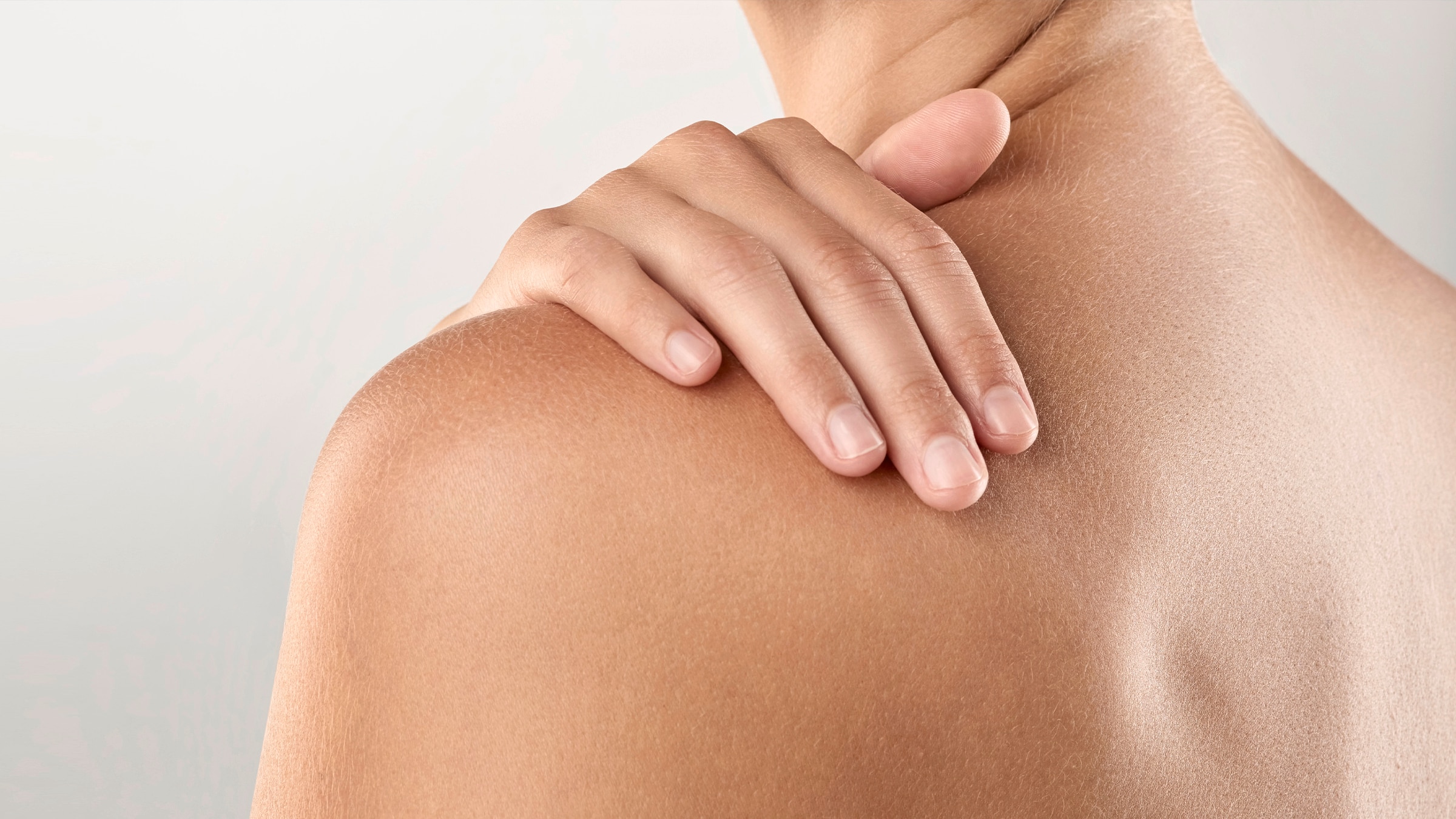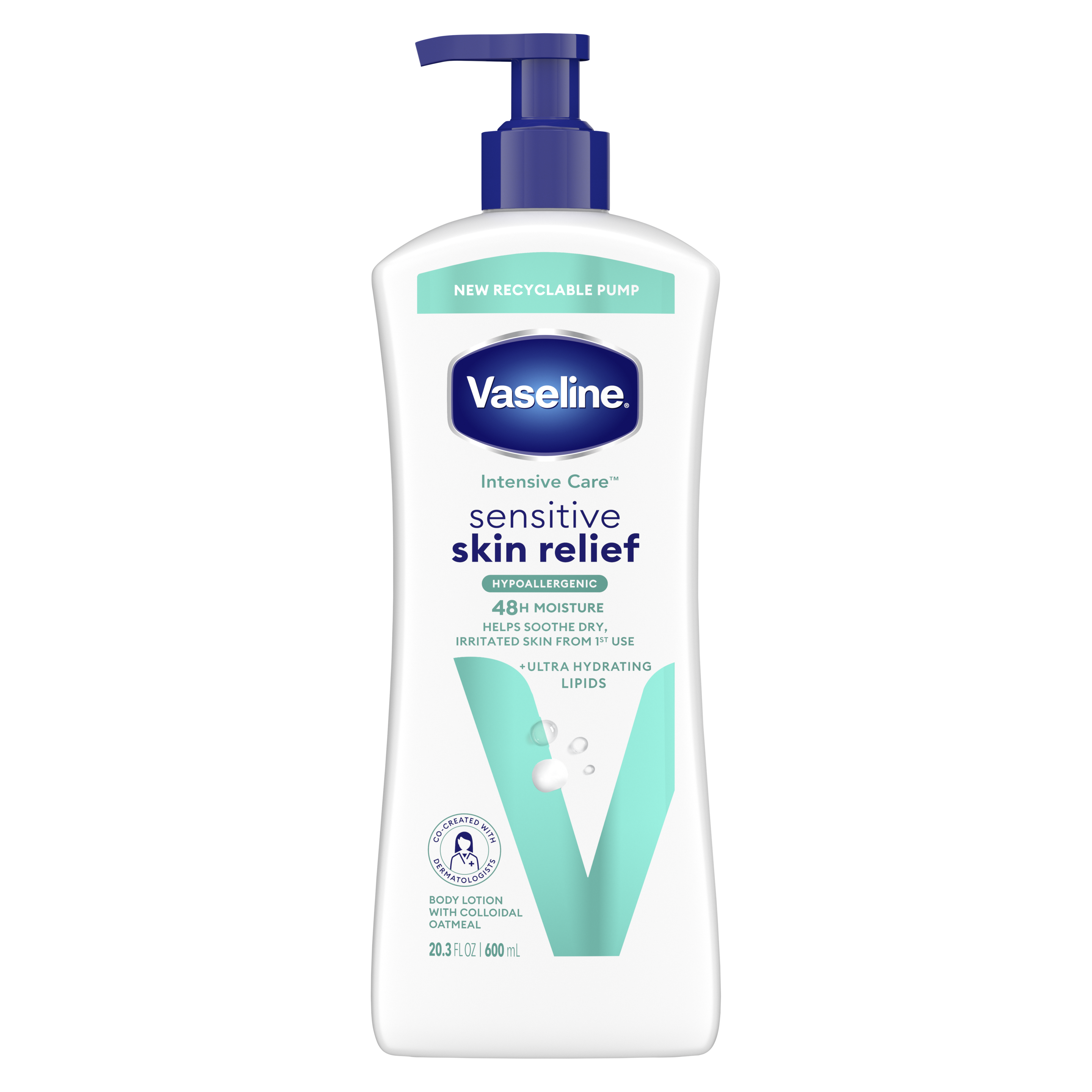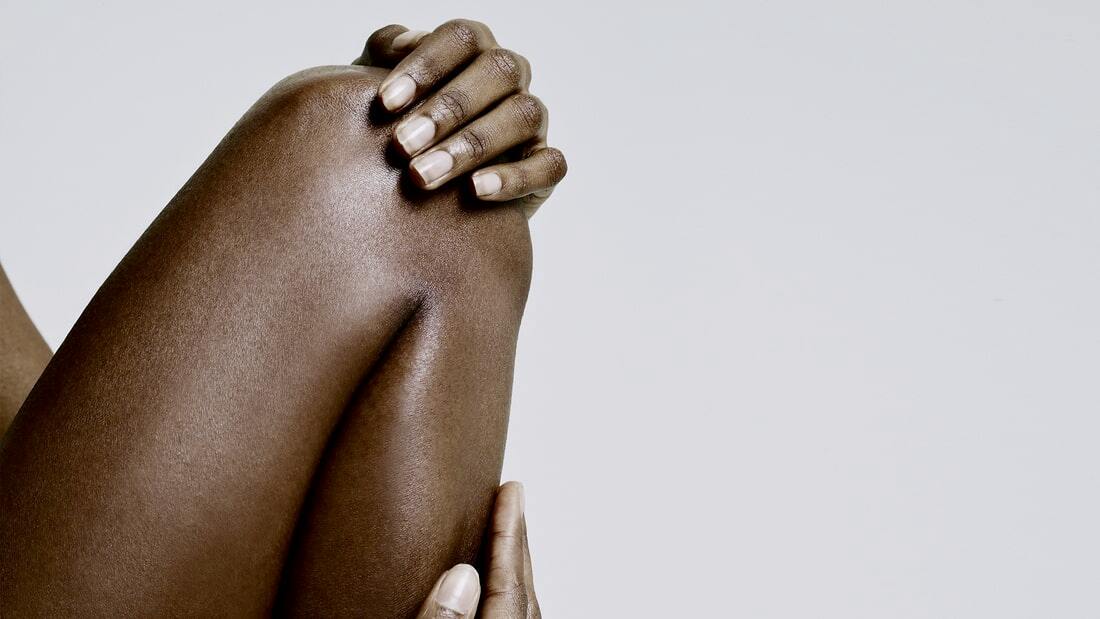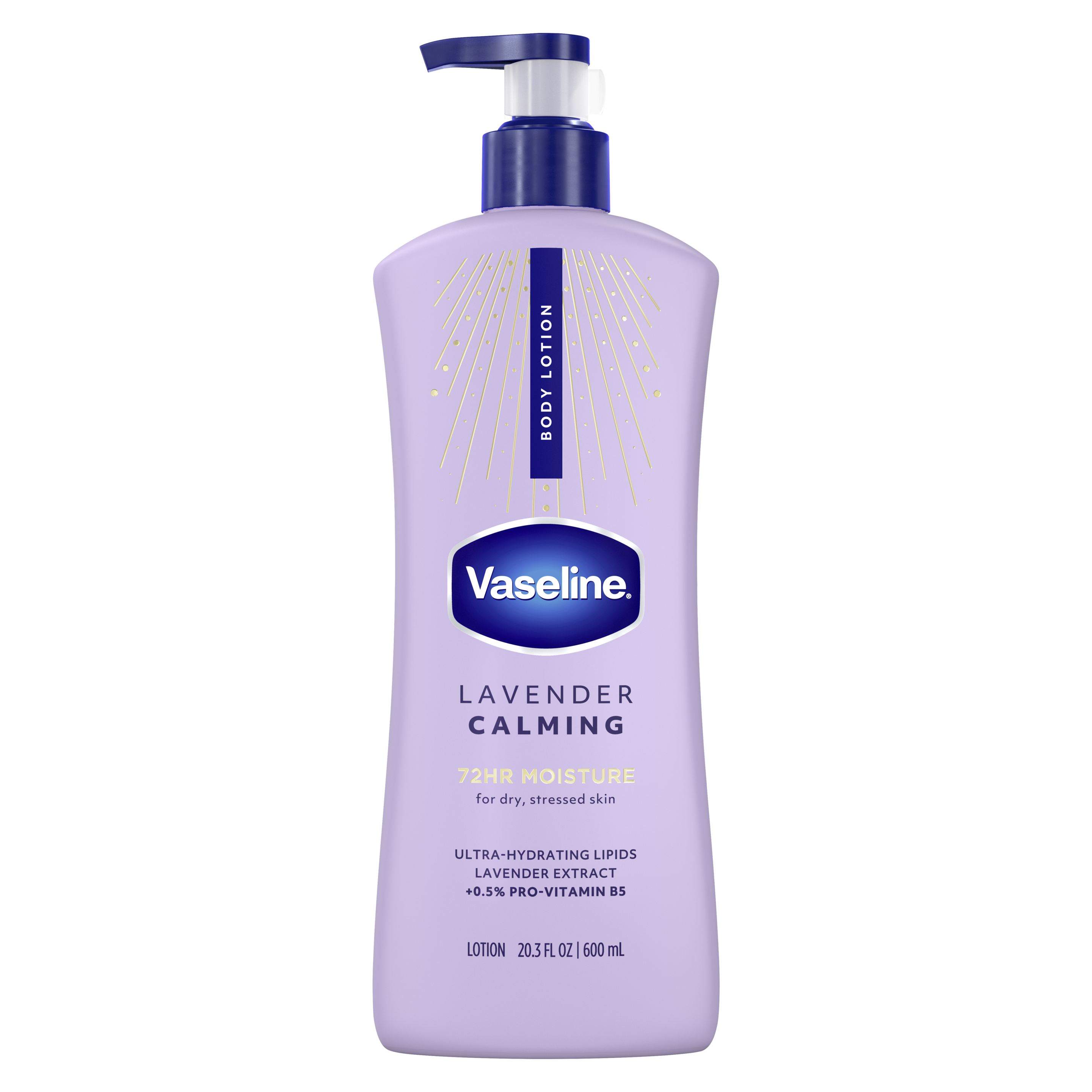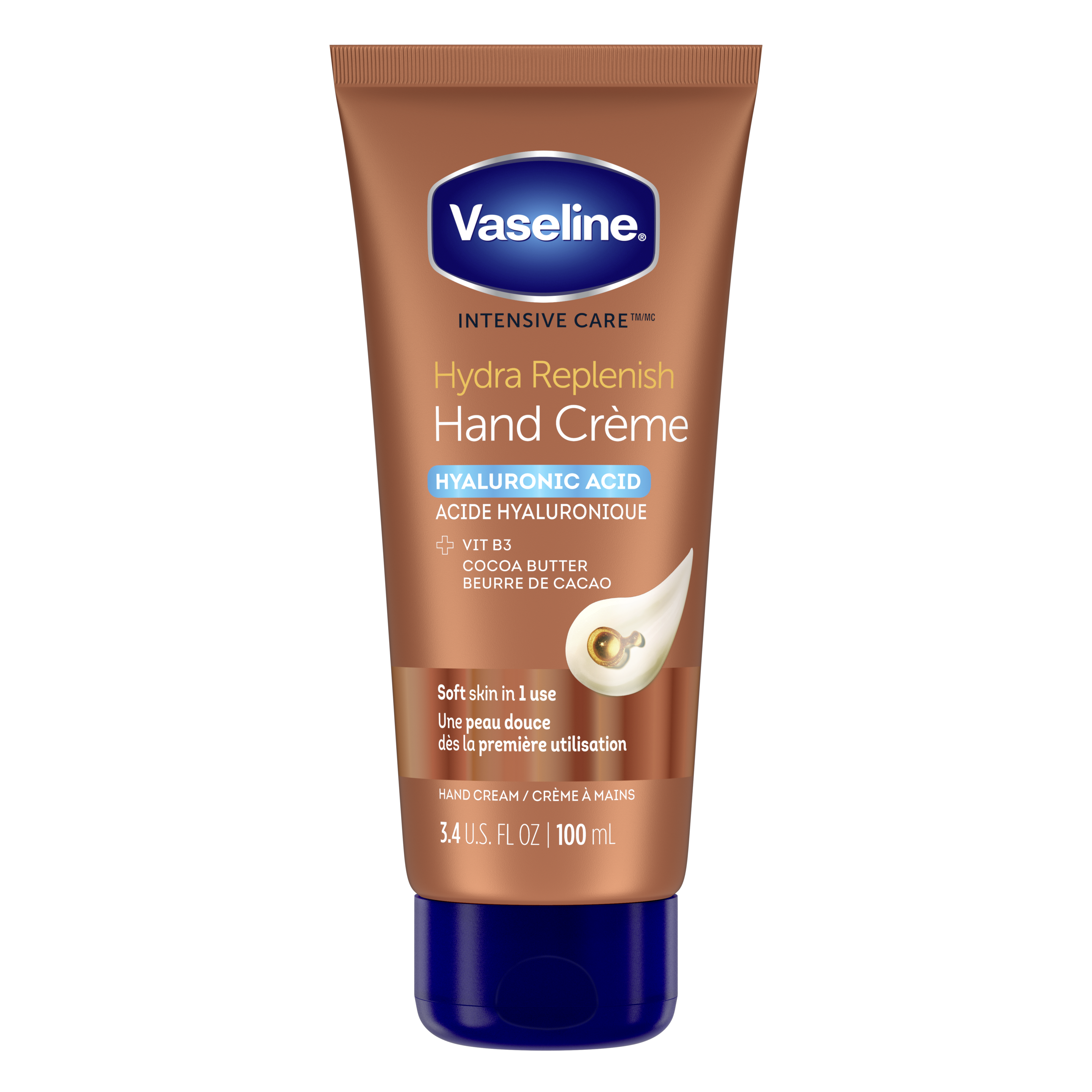Skip to content
A dry skin rash can appear due to a variety of reasons, and how you treat it will depend on what causes it. Everything from dry weather and medical conditions (like psoriasis) to a new skin-care product could trigger a rash that feels dry, itchy and irritated.
Some rashes require lengthy treatment and others can be resolved with a quick fix (like recognizing the product you’re allergic to and discontinuing usage). To help you get to the bottom of your dry skin rash we’re rounding up some of the most common causes, how to recognize them, and the best treatments.
This article will cover:
What can cause a dry skin rash?
If you naturally have a dry skin type, you have a higher chance of developing a dry skin-related condition.
Board-certified dermatologist Dr. Shari Marchbein explains: “Whether or not you are prone to dry skin is mostly determined by your genetics (such as if other family members experience sensitive skin or allergies); environmental factors (such as the weather conditions where you live); and/or behavioral factors (e.g., your efforts to moisturize and other daily habits).”
Dr. Marchbein adds: “Dry skin is caused by an impaired skin barrier and dysfunction or deficiency in the necessary healthy fats in the top layer of the skin (cholesterol, fatty acids and ceramides), which are essential to normal skin function. Since the protective lipid layer is responsible for keeping moisture in and bacteria and irritants out (aka our skin barrier), dry skin often presents with redness, flaking and itching.”
Various types of rashes make the skin feel dry and itchy, which can be caused by the following:
Contact dermatitis
Contact dermatitis occurs when your skin has a reaction to something it touches. The first sign is often itchy skin that later develops into a rash. It is estimated that over 15,000 things that touch our skin can cause an allergic reaction, and your skin can react within hours, or even days, after contact with the allergen.
There are two main types of contact dermatitis: allergic and irritant. The former occurs when your immune system reacts to an otherwise harmless substance (like a fragranced product or jewellery made of a specific metal) and releases a chemical that causes the rash.
Irritant contact dermatitis, on the other hand, happens when a harsh substance (like a strong detergent or acetone) damages your skin, causing a rash. These rashes can be more painful than itchy.
Atopic dermatitis
Atopic dermatitis (also known as eczema) is a chronic skin condition that affects an estimated 30 percent of the U.S. population. It causes extremely itchy rashes on the skin.
An eczema rash tends to feel dry and itchy, and if scratched, the rash could turn red, swollen or even release a clear fluid. Researchers aren't sure what causes the condition, but they do know that genes, the immune system and the environment all play a role.
Psoriasis
Psoriasis is another skin condition that may cause dry, thick and raised patches on the skin.
“Psoriasis, which comes from the Greek meaning ‘itchy condition,’ is an immune-mediated skin condition that occasionally causes itchy skin,” explains Dr. Michelle Henry, board-certified dermatologist. “People with psoriasis have overactive immune systems that speed up the production and overgrowth of skin cells. The overproduction ultimately results in a build-up of skin cells on the face, body and scalp. This is how the characteristic signs of skin patches and bumps are formed.”
Winter rash
If your rash appears during wintertime, the weather could be to blame. Cold temperatures, a lack of humidity and harsh winds can strip the skin of its natural protective moisture barrier, leaving it dry, itchy and irritated. You may also be more prone to a winter dry skin rash if you already suffer from a condition like eczema or psoriasis, or if your skin is sensitive.
Sunlight & UV light
Polymorphic light eruption is a type of rash that appears on the skin after it has been exposed to sunlight or artificial ultraviolet (UV) light. These rashes tend to be itchy and can even cause a burning sensation. While sometimes they appear in the form of pink or red spots, they could also develop as large, dry patches. It typically affects areas that get maximum sun exposure like the head, chest and arms.
Symptoms of dry skin rashes on different parts of the body
Dry skin rashes can appear anywhere on the body, but most commonly on the hands, feet, arms, and legs.
Dry skin rash on the hands
Our hands are especially prone to contact dermatitis, which is understandable, considering we touch most things with our hands. Symptoms include an intensely itchy rash that could be red or swollen and may begin to sting.
Apart from contact dermatitis, a dry skin rash on your hands could be the result of any of the causes we mentioned above.
Dry skin rash on the legs and feet
Rashes on your legs or feet can be caused by many things, including eczema and psoriasis.
If you’ve noticed dry rashes on your feet (especially between your toes), it could be a condition known as athlete’s foot, which is fairly common and caused by a fungal infection.
Dry skin rash on the face
A rash on the face could be caused by a variety of factors, including atopic or contact dermatitis. Another form of eczema, seborrheic dermatitis, is also a common condition that affects the scalp and parts of the face. The rash may appear dry and flaky, or even show signs of discoloration.
Certain types of psoriasis also manifest on the face, scalp and ears that look like small, scaly, pink bumps.
Treatments for dry skin rashes
Sometimes dry skin is a sign of some other issue such as eczema, psoriasis, or a thyroid imbalance,” explains Dr. Mona Gohara.
So, if you notice a rash, it’s always best to get advice from a professional who will examine the skin and offer a skilled assessment.
However, if your skin is dry and flaky due to cold weather or because you have a naturally dry skin type, there are ways to soothe the skin you can do at home.
Invest in a good moisturizer
If your skin is extremely dry and sensitive, use a moisturizer that’s tailor-made for your skin type. Ideally, look for a fragrance-free formula.
Try: The Vaseline® Intensive Care™ Sensitive Skin Relief body lotion is loaded with nourishing, soothing ingredients like colloidal oatmeal and ultra-hydrating lipids that inject moisture into dry, flaky skin without irritating it.
Apply a cool compress
No good can come from scratching a rash, no matter how itchy it feels. Instead, try applying a cool compress to the affected area. Soak a soft towel in cold water and wring out the excess. Then, gently place it on the itchy skin. Make sure to moisturize straight after.
Use a suitable ointment
If your rash is extremely dry (for example, if it’s caused by a condition like eczema), it’s important to use a suitable ointment to relieve the dryness. Your dermatologist may prescribe a topical steroid cream or ointment. Alternatively, applying a thin layer of petroleum jelly, like the Vaseline® Healing Jelly Original, could help calm the area and prevent it from getting drier.
Long-term prevention and control
These are some steps you can take to keep your skin from becoming overly dry, especially during the colder months:
Stay hydrated
Ensure you’re always hydrated, both inside and out. You should be drinking enough water (Harvard Medical School recommends four to six cups per day, or more if you’re sweating a lot). Also, ensure your skin is always hydrated, too. Use a moisturizer immediately after patting your skin dry after bathing and also before bed. Don’t forget to apply hand cream after you wash your hands or use a hand sanitizer.
Increase the moisture in the air
During winter, the air tends to get dry. And when you’re indoors, blasting heat from radiators, it can make your skin drier than normal. To combat this, invest in a humidifier.
Rethink your showering routine
“The first step to hydrated skin starts in the shower,” says Dr. Gohara. “Harsh cleansers can strip the skin barrier of natural lipids and proteins leaving it weaker. Compromised barriers allow water to evaporate and irritants to enter the skin causing dry, flaky, or sometimes even itchy or inflamed skin.”
Avoid long showers (ideally, try to get out in 10 minutes), and ensure your bath or shower water is warm, not hot. When you’re finished, use a soft towel to gently pat the skin dry rather than rubbing it. Next, slather your skin with moisturizer.
“Look for humectants like glycerin and hyaluronic acid; occlusives such as petroleum jelly or squalene; and emollients such as shea, or cocoa butter,” recommends Dr. Gohara. “My go-to lotion is any lotion from the Vaseline® Intensive Care™ Range. They are formulated with patent-pending Ultra-Hydrating Lipids to help provide 88% more moisture and have the technology to work on the skin to replenish its own ceramides for a strengthened skin barrier.”
Other helpful measures
- Always apply sunscreen before heading outdoors to prevent sunburn.
- Manage your stress. It can worsen conditions like eczema and other dry skin conditions.
- Wear clothes that don’t cling to the skin and are made of soft, natural fibers.
If you have a dry skin type or condition, remember that your skin needs a little extra love to look and feel its best. Regularly exfoliating and moisturizing your skin is key. And if you notice a rash, it’s always best to get it checked by a professional, before attempting any home remedies.
FAQs
How do you get rid of dry skin rash?
If you have a rash, it’s always best to get it checked by a dermatologist who will examine the skin and evaluate the best course of treatment. They may recommend an ointment or prescribe medication, depending on the cause of your rash.
What does a dry skin rash look like?
A dry skin rash can look different, depending on what has caused it. Most dry skin rashes tend to feel rough and appear scaly. They could also turn red and swollen when scratched.
What does dry skin eczema look like?
There are various types of eczema that all have slightly different symptoms. Each type can also look different depending on the part of your body it affects, and also the colour of your skin. Most, however, appear as dry, cracked or red patches.
These articles provide general tips and information about improving skin health. They have been written by health and beauty writers. They have not been written by health care professionals and, as such, don’t constitute medical advice. If you have a serious skin condition, please consult a medical professional.


